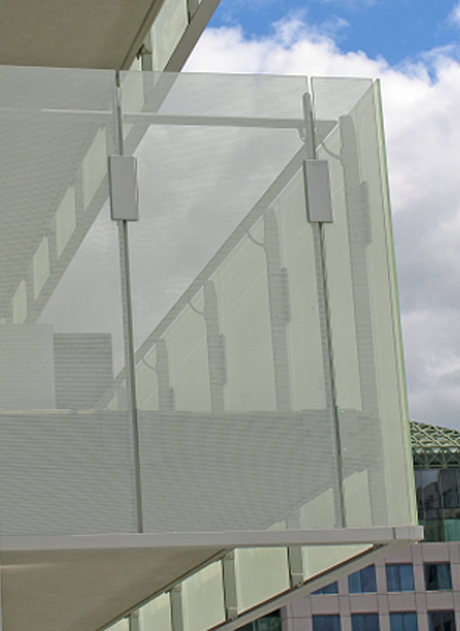Heat-Treated & Tempered Glass



Heat-Treated Glass
Heat treating is a process where annealed glass is heated to a point of about 700°C, then rapidly cooled (quenched) with forced air. During the quenching process, the outer layer of glass cools at a quicker rate than the inner layer, inducing compressive stresses on the surface of the glass and a balanced tensile strength within the centre of the glass. There are two main types of heat-treated glass: heat-strengthened and fully tempered. The difference is the residual stress on the glass surface.
There are two main types of heat treated glass, Heat Strenghtend and Fully Tempered. The difference is the residual stress on the glass surface.
Heat Strengthened Glass
Heat-strengthened glass has been heat-treated to a surface compression between 3,500 psi and 7,500 psi (24 to 52 MPa). This glass is intended for general glazing where additional strength is required, in order to withstand thermal stress and wind loads. Heat-strengthened glass is approximately twice as strong as annealed glass.
Tempered Glass
Tempered glass has been heat-treated to have a minimum surface compression of 10,000 psi (69 MPa). This glass is considered a safety glass, as it is four to six times stronger than annealed glass (depending on the amount of surface compression).
We have three state-of-the-art horizontal tempering ovens to meet the ever-growing demand for heat-treated glass products. All our architectural tempering furnaces feature convection technology, giving us the ability to heat-treat any and all hard-coat and soft-coat low-e glass products currently available on the market.
Our rigorous in-house testing ensures our heat-treated glass conforms to the CAN/CGSB-12.1-M90 and the ANSI Z97.1-2009 for Safety Glazing Materials.
Furnace Capacity
Minimum size 6" x 12" (150 x 300)
Maximum size 96" x 216" (2435 x 5500)


